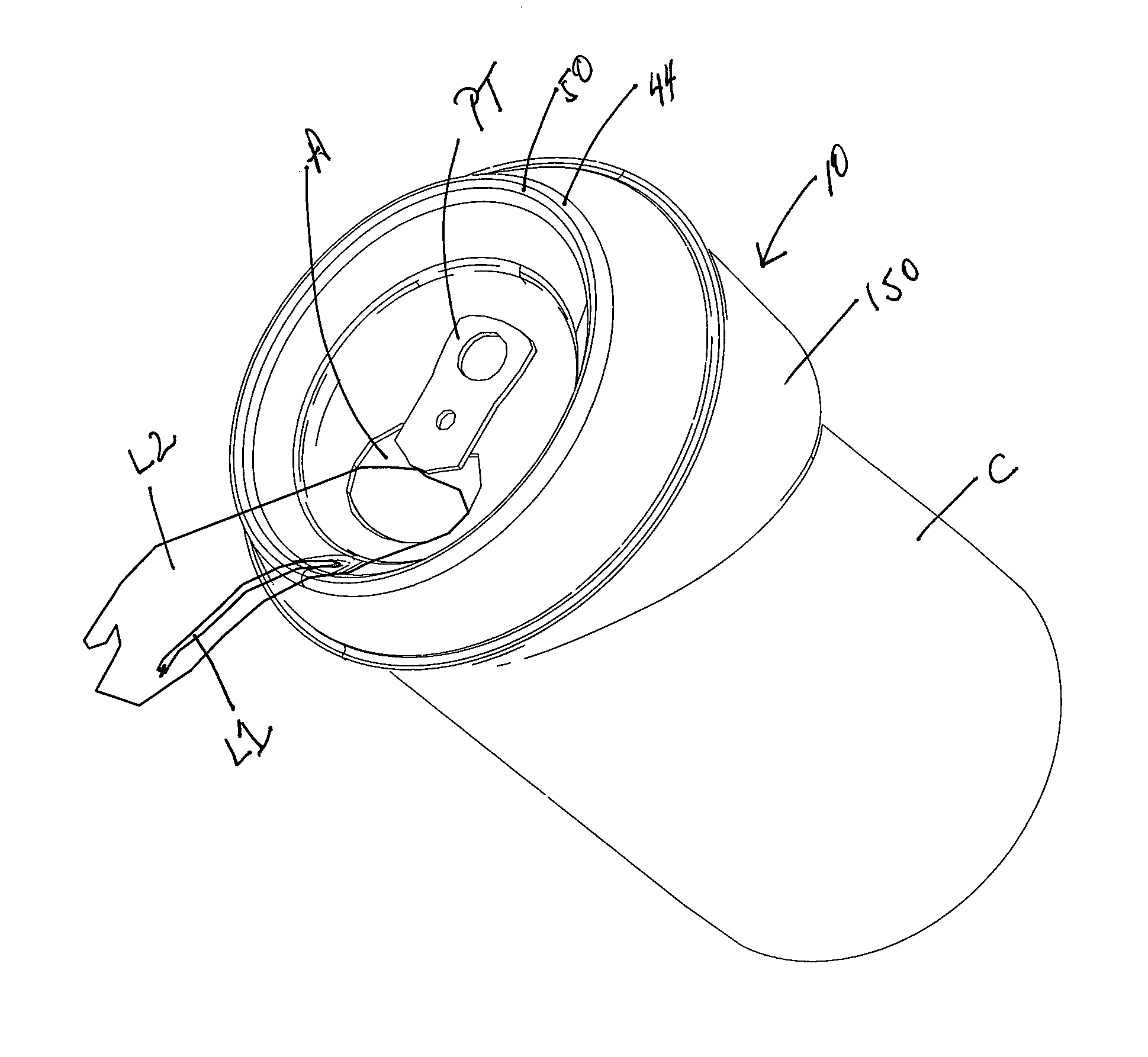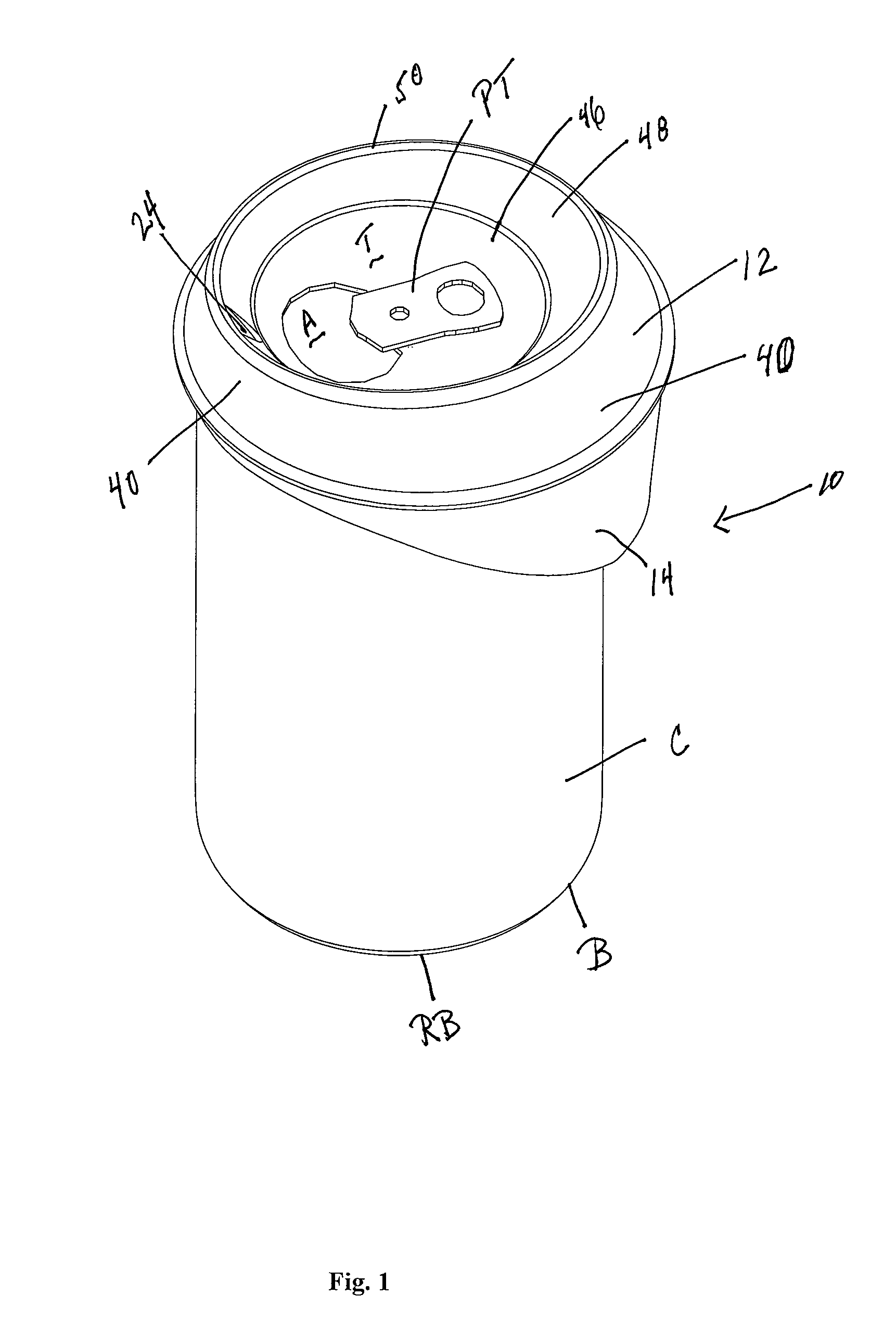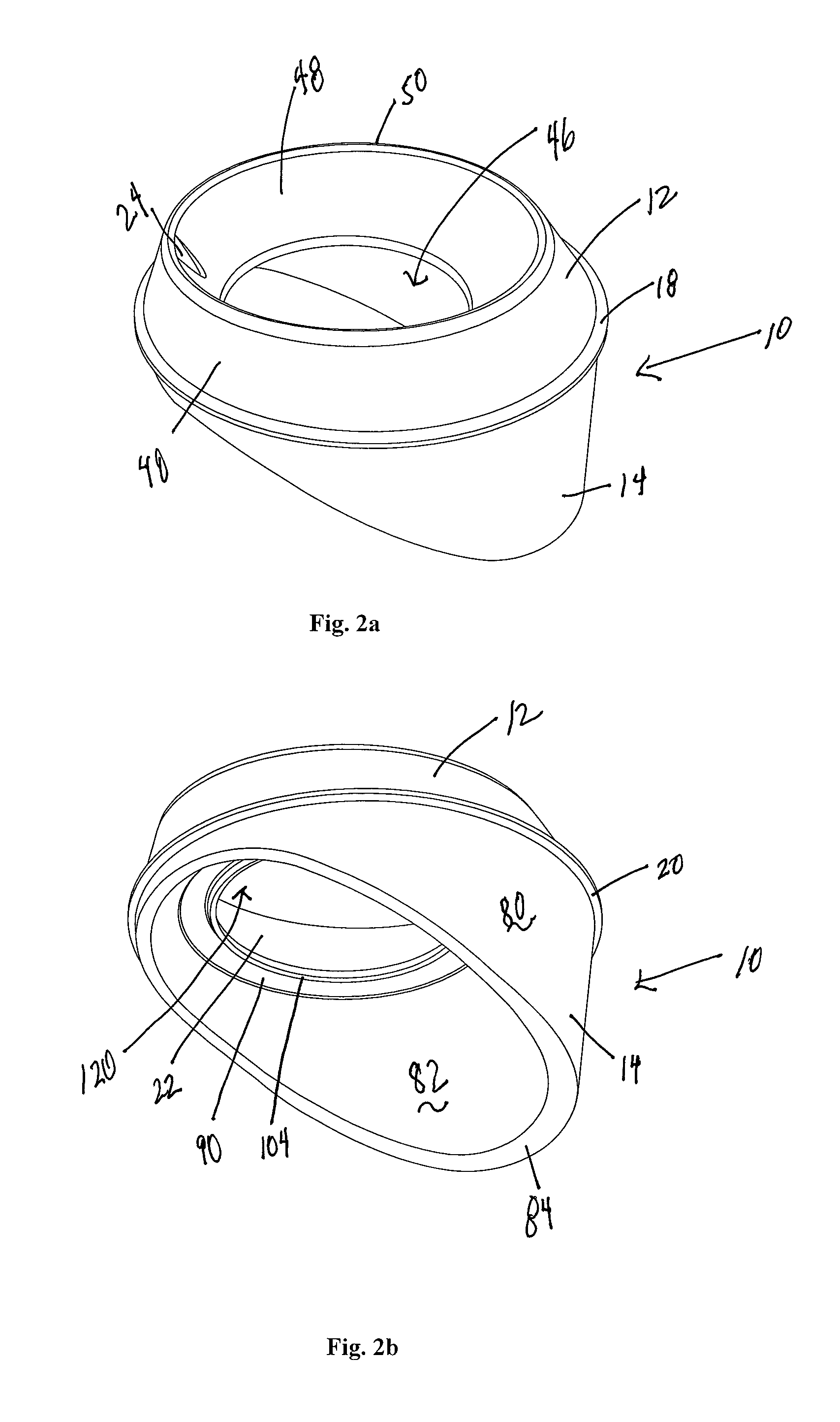Container with liquid for attachment to and mixing with poured liquid of conventional can
a technology of container and liquid, which is applied in the direction of liquid transferring device, drinking vessel, transportation and packaging, etc., can solve the problems of unfavorable premixing before drinking, unfavorable blending, and potentially messy liquids, and achieves the effect of convenient dumping or recycling
- Summary
- Abstract
- Description
- Claims
- Application Information
AI Technical Summary
Benefits of technology
Problems solved by technology
Method used
Image
Examples
Embodiment Construction
[0076]As best seen in the Figures, the device 10 is a liquid-holding mechanism for selective and proximal attachment to the pouring aperture of a conventional beer or soda can C. Since the device is preferably intended for selective attachment to and removal from a conventional or standard aluminum soda or beer can, to better understand and explain the details of the device, a description of some of the components of the aluminum can is believed needed and desirable. The can C comprises a base B, a cylindrical side wall SW and a top surface T. All are usually made from drawn aluminum, conventionally sold with soda, beer, juice, and other liquids therein. For the purpose of this disclosure, the liquid L2 contained within the can C (see FIGS. 10, 11, 12a-through 12e and FIGS. 13a and 13b) is referred to as the second liquid L2 while liquid L1 of the device 10 (see FIGS. 10, 11, 12a-12e; and 13a and 13b) refers to the first or added-in liquid of the device 10, the liquid intended to ch...
PUM
 Login to View More
Login to View More Abstract
Description
Claims
Application Information
 Login to View More
Login to View More - R&D
- Intellectual Property
- Life Sciences
- Materials
- Tech Scout
- Unparalleled Data Quality
- Higher Quality Content
- 60% Fewer Hallucinations
Browse by: Latest US Patents, China's latest patents, Technical Efficacy Thesaurus, Application Domain, Technology Topic, Popular Technical Reports.
© 2025 PatSnap. All rights reserved.Legal|Privacy policy|Modern Slavery Act Transparency Statement|Sitemap|About US| Contact US: help@patsnap.com



